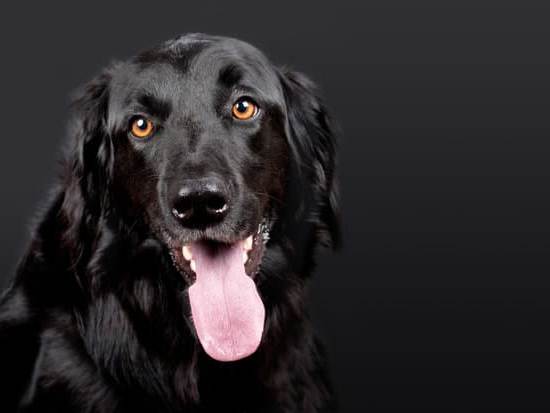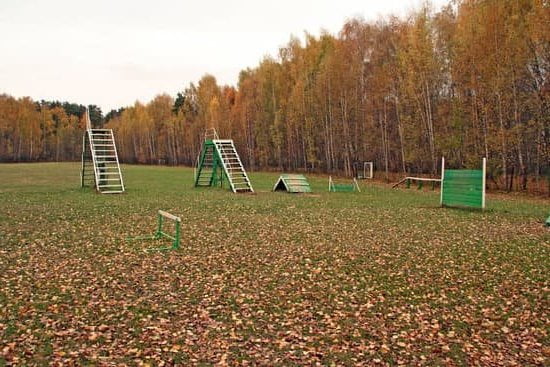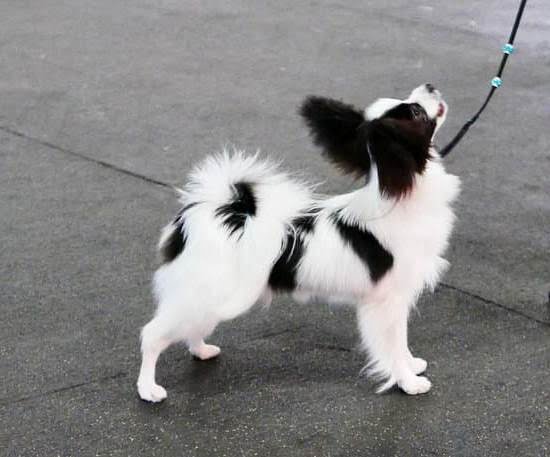Are you struggling with your dog’s biting behavior during playtime? If you find yourself constantly asking, “how to train my dog to not bite when playing,” then you’ve come to the right place.
Biting during play is a common issue that many dog owners face, but with proper training and techniques, it can be addressed effectively. In this article, we will explore the reasons behind biting during play and provide valuable insights into positive reinforcement training, socialization, and other key methods to prevent biting behavior in your furry friend.
Biting during play can be a result of various factors, including teething, excitement, fear, or even aggression. Understanding these underlying reasons is crucial in addressing and modifying your dog’s behavior. By identifying the root cause of biting during playtime, you can implement targeted training techniques to encourage appropriate behavior and reduce the occurrence of biting.
Positive reinforcement training techniques are integral in teaching bite inhibition to your dog. Through consistent rewards for gentle play and redirection from rough or aggressive behavior, you can effectively communicate to your dog what is acceptable during playtime. This section will delve into specific training methods that focus on rewarding desired behaviors while discouraging biting tendencies in your canine companion.
In addition to training techniques, proper socialization plays a vital role in reducing biting behavior in dogs. Exposure to various environments, people, and animals at an early age helps your dog develop good manners and learn appropriate interactions during play. We will discuss the importance of socialization as a preventive measure for biting and how it contributes to shaping well-rounded canine behavior.
Positive Reinforcement Training Techniques for Bite Inhibition
Many dog owners struggle with their pets biting during play, causing frustration and concern. Understanding the reasons behind biting during play is essential in addressing this behavior. Dogs often use their mouths to explore the world around them, and when they are puppies, they use biting as a way to learn about their environment.
Additionally, play biting can also be a sign of overexcitement or an attempt to show dominance. By understanding these reasons, dog owners can better address the behavior.
Positive reinforcement training techniques are effective in teaching bite inhibition to dogs. One technique involves yelping or saying “ouch” in a high-pitched voice when the dog bites too hard during play. This mimics how other dogs would react if bitten too hard during play and teaches the dog that biting too hard results in a negative consequence. When the dog stops or licks instead of continuing to bite, it is important to praise and reward the good behavior.
Socialization is another key aspect of reducing biting behavior in dogs. Proper socialization helps dogs learn proper interactions with humans and other animals, decreasing the likelihood of aggressive and excessive biting. Exposure to various people, animals, environments, and situations from an early age can significantly impact a dog’s behavior.
Proper chew toys also play a large role in redirecting your dog’s biting behavior away from people or inappropriate objects. Providing a variety of chew toys encourages your dog to chew on appropriate items rather than using human hands or clothing as chew toys during playtime.
By employing these positive reinforcement training techniques, socializing your pet properly, and providing appropriate chew toys, you can effectively train your dog not to bite when playing while strengthening your bond with them at the same time.
| Technique | Effectiveness |
|---|---|
| Yelping or saying “ouch” | Teaches dogs that biting too hard results in negative consequences. |
| Socialization | Reduces aggressive and excessive biting through exposure to various people, animals, environments, and situations. |
| Chew toys | Redirects biting behavior away from people or inappropriate objects by providing appropriate items for chewing. |
Proper Socialization to Reduce Biting Behavior
Proper socialization is a key factor in reducing biting behavior in dogs during playtime. When puppies are properly socialized at a young age, they are more likely to develop good bite inhibition and appropriate play behavior. Socializing your dog involves exposing them to a wide range of experiences, people, and other animals in a positive and controlled manner.
One effective technique for socialization is enrolling your dog in puppy classes or obedience training. These classes provide opportunities for your dog to interact with other puppies and learn essential skills such as bite inhibition. Additionally, exposing your dog to different environments, sounds, and experiences can help reduce fear-based aggression and inappropriate biting behavior.
It’s important to monitor your dog’s interactions with other animals and people during the socialization process. This allows you to intervene if your dog exhibits any signs of aggressive or inappropriate behavior during play. By providing positive reinforcement for calm and gentle interactions, you can help shape your dog’s behavior during playtime.
In addition to proper socialization, consistent training techniques such as redirecting biting behavior towards appropriate chew toys and using positive reinforcement can further reinforce good play habits in your dog. By approaching the issue from multiple angles, you can effectively train your dog to not bite when playing while promoting healthy social interactions with both humans and other animals.
| Training Technique | Effectiveness |
|---|---|
| Positive reinforcement | Highly effective in promoting bite inhibition |
| Redirecting biting behavior | Helps prevent unwanted biting during playtime |
| Puppy classes/socialization | Essential for developing good play behaviors |
Supervised Playtime and Teaching Appropriate Play Behaviors
When it comes to preventing biting during playtime, supervised play and teaching appropriate play behaviors are crucial. By implementing the right techniques and providing proper guidance, you can help your dog develop better habits and behavior when engaging in playful activities.
Here are some effective strategies for supervised playtime and teaching appropriate play behaviors:
- Set clear boundaries: Establishing rules for playtime can help your dog understand what behavior is acceptable. For example, teach them that gentle mouthing or licking is okay, but any hard biting is not allowed.
- Use positive reinforcement: Whenever your dog displays good behavior during play, such as gentle play or responding to commands to stop biting, reward them with treats, praise, or toys. Positive reinforcement can reinforce the desired behaviors while discouraging biting.
- Teach command cues: Teach your dog cues such as “gentle” or “no bite” during playtime. When they start to exhibit rough behavior, use these cues to redirect their attention and encourage softer interaction.
With these strategies, you can guide your dog towards understanding appropriate play behaviors and avoiding excessive or aggressive biting. Consistency in reinforcing these techniques will also be key in helping your dog learn how to engage in a more controlled and enjoyable manner during playtime.
Remember that every dog is different, so it’s important to tailor your approach based on your pet’s individual personality, breed traits, and learning style. With patience and dedication, you can successfully train your dog to not bite when playing.
Seeking professional help for persistent biting behavior:
If despite consistent training efforts your dog continues to exhibit persistent biting behavior during playtime, it may be necessary to seek professional assistance from a certified dog trainer or behaviorist. These experts can evaluate the underlying reasons for the biting behavior and provide tailored guidance and interventions to address the issue effectively.
Providing Appropriate Chew Toys and Redirecting Biting Behavior
Dogs chew as a way of exploring their environment and relieving stress or discomfort, so it’s important to provide them with appropriate chew toys to redirect biting behavior during playtime. When training your dog to not bite when playing, it’s essential to understand the importance of providing the right toys and redirecting their natural chewing instinct.
Here are some tips for providing appropriate chew toys and redirecting biting behavior:
- Provide a variety of chew toys: Offer a selection of different textures, sizes, and shapes of chew toys to keep your dog interested and engaged. This can help satisfy their need to chew and reduce the likelihood of biting during play.
- Supervise playtime with toys: When playing with your dog, always supervise their interactions with chew toys. If you notice them starting to bite or display aggressive behavior, immediately redirect their attention to a suitable toy.
- Use positive reinforcement: Whenever your dog chooses to chew on an appropriate toy instead of biting during play, reward them with praise, treats, or affection. This helps reinforce the desired behavior and encourages them to continue chewing on their toys instead of using their mouth inappropriately.
By providing proper chew toys and consistently redirecting biting behavior during playtime, you can help train your dog to not bite when playing. Remember that patience and consistency are key when using these techniques to modify your dog’s behavior.
Overall, it’s important to remember that each dog is unique in how they respond to training methods for bite inhibition. If your dog’s biting behavior persists despite consistent training efforts, seeking professional help from a certified dog trainer or behaviorist may be necessary for addressing the issue effectively.
Consistency and Patience in Training
When it comes to training a dog to not bite during play, consistency and patience are crucial. This section will discuss the importance of these qualities in training and provide some tips for effectively applying them.
Consistent Reinforcement
Consistency is key when training a dog to not bite when playing. It’s important to establish clear rules and boundaries for your dog and consistently reinforce them. This means responding to biting behavior in the same way every time, whether it’s through redirection, positive reinforcement, or other training techniques. Inconsistency can confuse the dog and make it more difficult for them to understand what is and isn’t acceptable behavior.
Patience in Correction
Training a dog to not bite during play takes time and patience. It’s important to remain calm and patient when correcting biting behavior, as getting frustrated or angry can negatively impact the training process. Remember that dogs learn best through positive reinforcement and consistent correction over time.
Teaching Alternative Behaviors
Another aspect of consistency and patience in training involves teaching alternative behaviors to replace biting during play. This could include teaching your dog commands like “gentle” or “drop it” to encourage appropriate play behavior without resorting to biting. Consistently reinforcing these alternative behaviors through positive reinforcement will help your dog understand what is expected of them during playtime.
By being consistent in your approach, remaining patient throughout the training process, and teaching alternative behaviors, you can effectively train your dog to not bite when playing. Remember that every dog is different, so be patient with the process and always seek professional help if you’re struggling with persistent biting behavior despite your best efforts at training.
Seeking Professional Help for Persistent Biting Behavior
If you have tried multiple positive reinforcement training techniques, proper socialization, supervised playtime, and providing appropriate chew toys but your dog’s biting behavior during play is not improving, it may be time to seek professional help. Professional dog trainers and behaviorists have the experience and knowledge to address and correct persistent biting behavior in dogs. Here are some sub-sections to consider when seeking professional help for persistent biting behavior:
Consulting With a Professional Dog Trainer
A skilled dog trainer can assess the root cause of your dog’s biting behavior during play and develop a tailored training plan to address it. They can provide personalized guidance on using positive reinforcement techniques, proper socialization methods, and supervised play sessions to teach your dog bite inhibition.
Working With a Certified Canine Behaviorist
Certified canine behaviorists specialize in understanding the underlying reasons behind a dog’s behaviors, including biting during play. They can develop behavior modification plans and implement desensitization exercises to reduce your dog’s tendency to bite when playing.
Attending Obedience Classes
Enrolling your dog in obedience classes led by a professional trainer can provide structured guidance on teaching appropriate play behaviors and bite inhibition. Obedience classes can also help improve your dog’s overall responsiveness to commands, which can be beneficial in preventing unwanted biting during playtime.
Remember that seeking professional help for persistent biting behavior demonstrates your commitment to addressing the issue effectively. By collaborating with trained professionals, you can gain valuable insights and support in modifying your dog’s behavior for safer and enjoyable play interactions.
Overall, consulting with a professional who specializes in canine behavior is valuable for addressing persistent biting issues that arise during playtime with your dog. These experts can offer customized strategies and techniques tailored specifically to your pet’s needs and preferences”.
Recap of Key Tips and Training Methods for Preventing Biting During Playtime
In conclusion, training a dog not to bite during playtime requires understanding the reasons behind this behavior and implementing positive reinforcement techniques. By providing proper socialization, supervised playtime, and appropriate chew toys, owners can effectively reduce biting behavior in their dogs. Consistency and patience are essential in this process, as is seeking professional help for persistent biting issues.
It’s important to remember that while training your dog not to bite during play may take time and effort, it is ultimately a worthwhile investment in your pet’s well-being and the safety of those around them. With dedication and the use of positive reinforcement techniques, owners can successfully teach their dogs appropriate play behaviors.
By following the key tips and training methods outlined in this article, such as positive reinforcement training, proper socialization, supervised playtime, and redirecting biting behavior with chew toys, dog owners can effectively train their pets not to bite during play. It’s crucial to remain patient and consistent throughout the training process, as well as seek professional help if biting behavior persists despite efforts to correct it.
With these strategies in place, dog owners can create a safe and enjoyable play environment for both themselves and their pets.
Frequently Asked Questions
How Do I Train My Dog Not to Bite While Playing?
Training a dog not to bite while playing requires consistency, positive reinforcement, and redirection. Use commands like “no bite” and provide chew toys as an alternative. Avoid rough play that encourages biting.
Why Does My Dog Keep Biting Me When I Play?
Dogs often bite during play because it’s natural behavior for them. It could also be a sign of overstimulation or excitement. It’s important to teach them appropriate ways to interact during playtime.
Do Dogs Know Not to Bite When Playing?
Dogs don’t inherently know not to bite when playing, but they can learn through training and socialization. Puppies learn bite inhibition from their littermates, but it’s up to owners to continue teaching this behavior as they grow older and play with humans.

Welcome to the blog! I am a professional dog trainer and have been working with dogs for many years. In this blog, I will be discussing various topics related to dog training, including tips, tricks, and advice. I hope you find this information helpful and informative. Thanks for reading!





